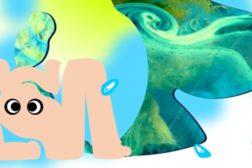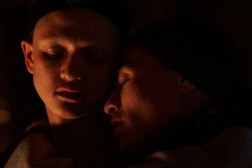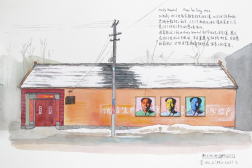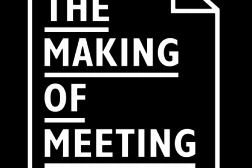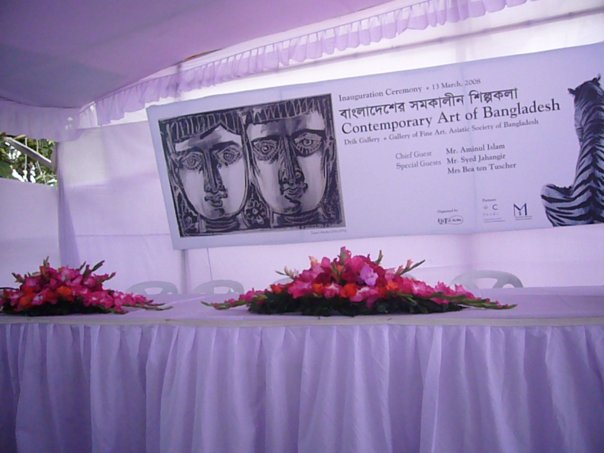





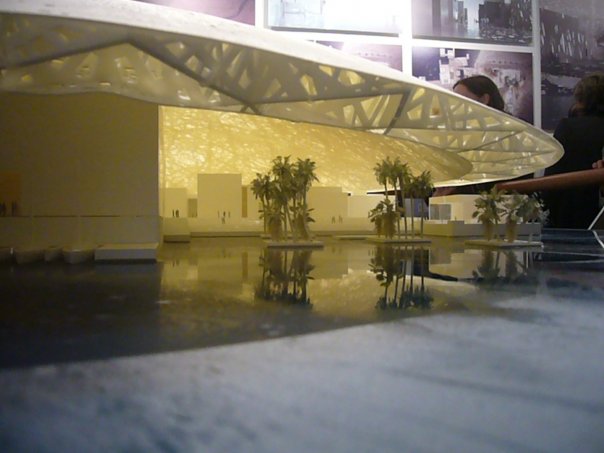


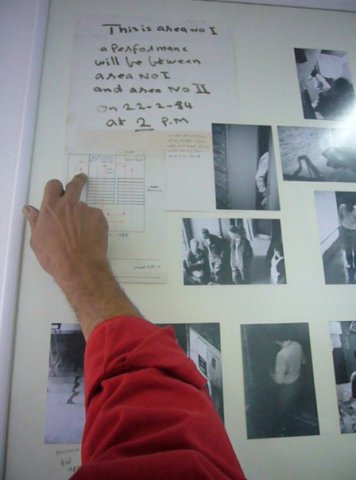

Defne Ayas Joins Research Trip
Time: 12-23 March, 2008
Arthub Program Consultant Defne Ayas joined an orientation trip for art professionals to Bangladesh, India and ending at the Dubai Art Fair. The trip went from March 12-23 of 2008 and art professionals from the Netherlands, Latin America, Asia and Africa were invited to participate in the orientation trip. The goal of this trip was to extend international networks and contacts, and to stimulate the international dialogue between art professionals.
Past orientation trips have brought art professionals across the world: in 2004 to Lebanon and Egypt, in 2005 to China, in 2006 to Senegal and South Africa, and in 2007 to Mexico and Curacao.
Below are travel notes from Defne Ayas:
Dhaka
Here, we first met with the people of DRIK Gallery. DRIK had set up a picture agency representing a group of media professionals, all sharing a common goal — one that avoids disaster reporting, but treats journalism as a challenge to change certain perceptions about the Third World. Most of the photographers were human right activists and DRIK offered them an open source platform where their works can be licensed as appropriate. DRIK has also pioneered the introduction of email into Bangladesh, in addition to creating the first font for email, and it seems that they still take the lead in new media. They also started the human rights portal Banglarights, and have a broad band direct satellite link.
The trip’s highlight in Dhaka was visiting the monumental bunker meets parliament edifice by Kahn and also meeting up with Naeem Mohameien in his hometown. Mohameien is known for his work on failed revolutions or collaborations with DJ Spooky. His essay Fear of a Muslim Planet: Islamic Roots of Hip-hop was in DJ Spooky’s book. Naeem works on activist projects in Bangladesh, is well-respected by his older peers and contemporaries, and mainly writes on religious and ethnic minorities in the region.
Delhi
In Delhi, we met the Raqs Media Collective run by media practitioners Jeebesh Bagchi, Monica Narula, and Shuddhabrata Sengupta. Their work engages with urban spaces with a series of investigations through image, sound, software, objects, performance, print, text, and most recently curation with a subtle but consistent critique of power. One of their recent curation projects was Manifesta 7. Over-articulated they are, I have to say! In general, my observation was that Indians are so very truly brilliant in their mastery of English, thus the reason why all the Post-Colonial Anti-globalization discourse must be streaming from this part of the world!
RMC is also the co-initiator of Sarai (set up in 2001) a program at the university supporting interdisciplinary research and practice on media, city space, and urban culture. They work on projects interpreting the city, making cross-media works, collaborating on development of software etc., and publish yearly readers — these series are brilliant.
We also met KHOJ people, whose Live Art program seemed to be modeled after PERFORMA. Similar to PERFORMA, they are also all in collaboration with public space, non-profit and for-profit spaces, though their content still needed some refinement. The artists come from Iran, Egypt (notably Hassan Khan, who I would like us to collaborate with), South Africa, Lebanon, Indonesia, etc.
The most brilliant Islamic legacy in the Indian culture edifice in this city was Humayun’s Tombs from 16th century, this Mongol period was the height of this civilization. I was also in love with the Crafts Museum, a delightful tree-shaded place packed with historical material from around India, including textiles, cashmere, various weaving technique. There was also a huge 18th-century elaborate wooden balcony suspended within the walls of the space with carpets, games, carvings, and masks everywhere. It was a living, an emotionally charged museum, which made most of us cry out for its collection of sheer beauty.
Mumbai
Among all the artists we have met, meeting with Shilpa Gupta, an inventive Indian new media artist, at Bodhi Art was a highlight. She is an artist I would like to inquire more about. We also had a presentation by the super-prolific and dedicated artist Nikhil Chopra on his performance “Memory Drawing II” at the gallery Chatterjee & Lal. We were lucky to also meet Sudarshan Sheety, who currently has a show up at Jack Tilton. He seems to be a master of stages and sets!
Dubai
My immediate impression is that this place was Singapore minus tropics and plus more glossy, cookie-cutter buildings and giant ambitions. Dubai in fact is a very Arab-centric, renaissance city. Perhaps it is a bit like LA in the 60s, where money/glamor existed but nothing else — no soul or spirit — or maybe it could also be an Islamic Florence. The notion of engineering is very visible, and they definitely keep their architects busy! Hans Ulrich Obrist, Rem Koolhaas, David Ross, Glenn Lowry are all there and giving Dubai authorities ideas on how to turn this state into a cultural paradise. The Sheik wants to turn Dubai into a Hub of Arts and Culture for the region. I ended up meeting one of these authority managers for 10 minutes.
Abu Dhabi
This is the other Emirates, they are competing with Dubai, have more money, but are more into the import-export museum business. Iraqi architect Zaha Hadid is designing the Performing Arts Center, Gehry the Gugg, Piano the Louvre… Adjaye, Tadao Ando all doing additional projects. My favorite was of course an Islamic collection that was on view par chance, drawing from the private holdings of the Iranian-Jewish Khalili. The collection traced artistic refinement of Islamic art from the earliest examples of luster painted ceramics, glass and textiles to the brilliant output of the Ottoman period (16th to 19th centuries) with manuscripts, Iznik pottery, and jeweled objects from Mongol India…
Here I stop. It has been only 24 hours since I came back, so I am still digesting it all.
Over all, the trip allowed for productive findings re. calligraphy/typography, urbanism issues, fashion, exciting new materials in new media and performance from Middle East, India and beyond, and made me see some of the parallel plays between India, China, and Abu Dubai.
Defne Ayas, 2008
Orientation trip sponsored by the Mondriaan Stichting and the Prince Claus Fund.
